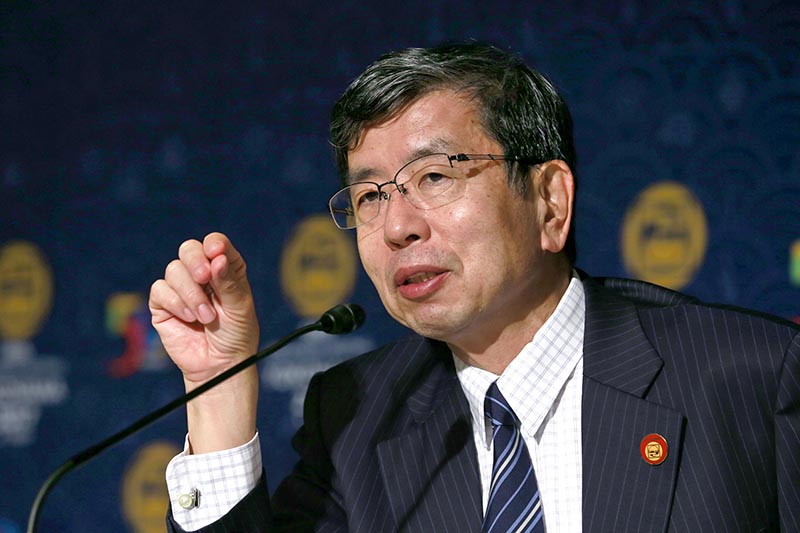ADB hoping US will step up and help lead regional lender
YOKOHAMA: The head of the Asian Development Bank said Sunday he is hoping the US will step up and support the regional lender despite President Donald Trump's avowed preference for bilateral cooperation.
ADB President Takehiko Nakao told reporters at a news conference wrapping up the bank's annual meeting that it "isn't really good" that the second largest shareholder in the development bank is lacking a permanent appointee to the US executive directorship.
Nakao said he hoped Washington would nominate an ambassador soon. Many such positions have yet to be filled, and the previous US ambassador to the ADB was ordered back to the US along with many other appointees of the previous administration.
For a country that is a co-founder of one of the world's most influential lending institutions, the US presence at the ADB annual meeting — one marking its 50th year of operations — was low key.
Japan is the largest donor to the ADB and plays a leading role in its management. It is unclear what Trump's "America First" foreign policy stance means for the ADB, or even for Asia in general.
Soon after taking office in January, Trump announced the US would withdraw from the Trans-Pacific Partnership regional trade agreement, saying he prefers country-to-country trade deals.
Trump recently appointed Eli H. Miller, chief of staff at the Treasury Department, as acting director of both the ADB and the European Bank for Reconstruction and Development pending a permanent appointment. Miller did not attend the ADB's annual meeting.
The top US representative in Yokohama was Robert Kaproth, US deputy assistant secretary for Asia.
The ADB is preparing to set its long-term strategy for the years leading to 2030, and Nakao said he intends to make the lender "stronger, better and faster."
He said the regional bank, which has dozens of member countries from the Asia-Pacific region and beyond, has been a relatively efficient source of support for development of a region that once was characterized by extreme poverty.
"The US investment in Asia has been very efficient and productive. I hope the US government will look at these issues and continue to invest in the ADB," Nakao said.
A top priority for the ADB and other regional institutions is to help countries weather natural disasters and other threats. Apart from investing in infrastructure such as power plants, bridges and hospitals, the ADB provided financial support for countries during the 1997 Asian financial crisis, and is seeking ways to leverage more private investment to help make up for shortfalls in funding.
One of the bank's key roles has been to help reduce risks for investments in developing countries, thanks to its strong links to local governments.






